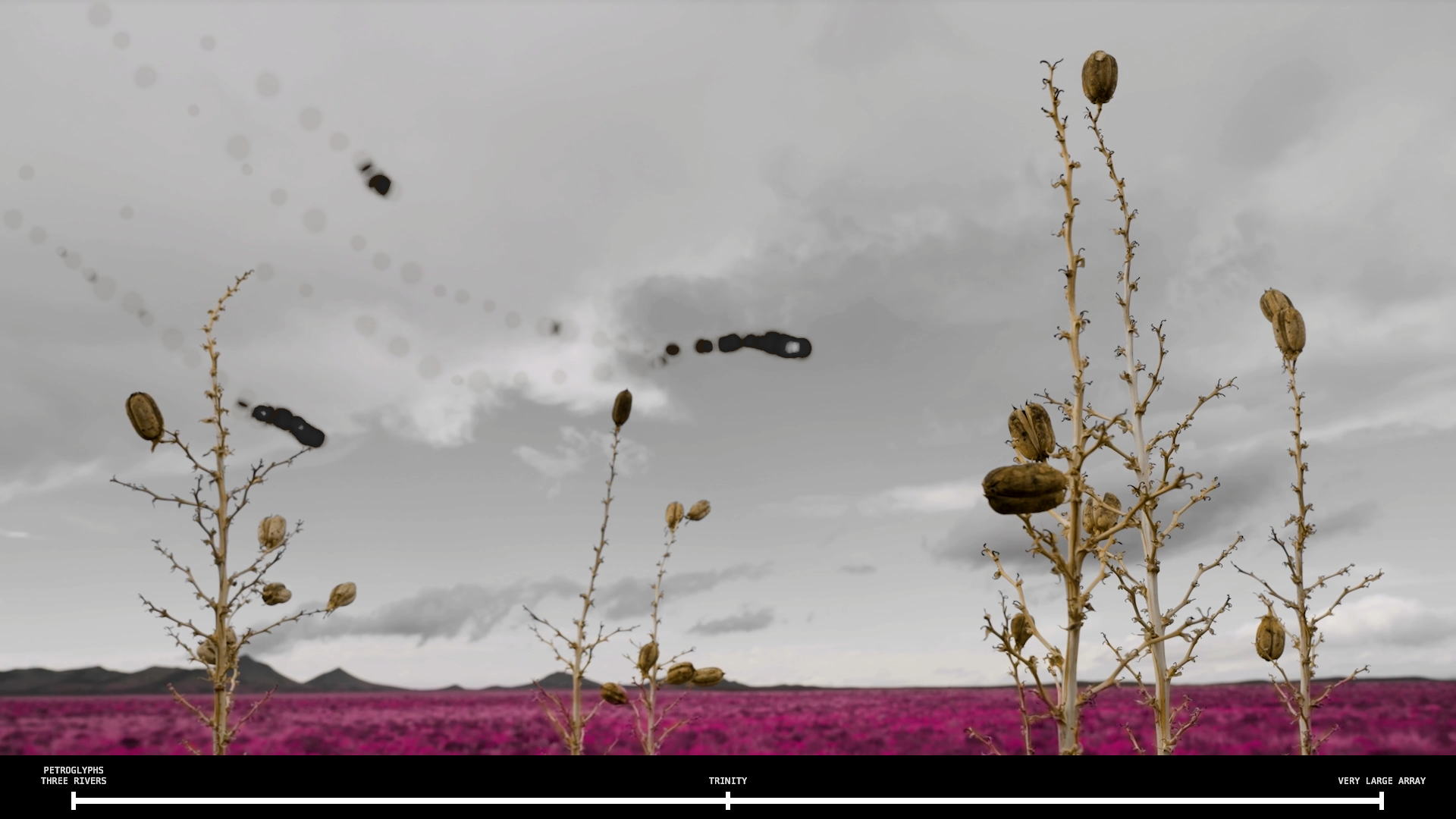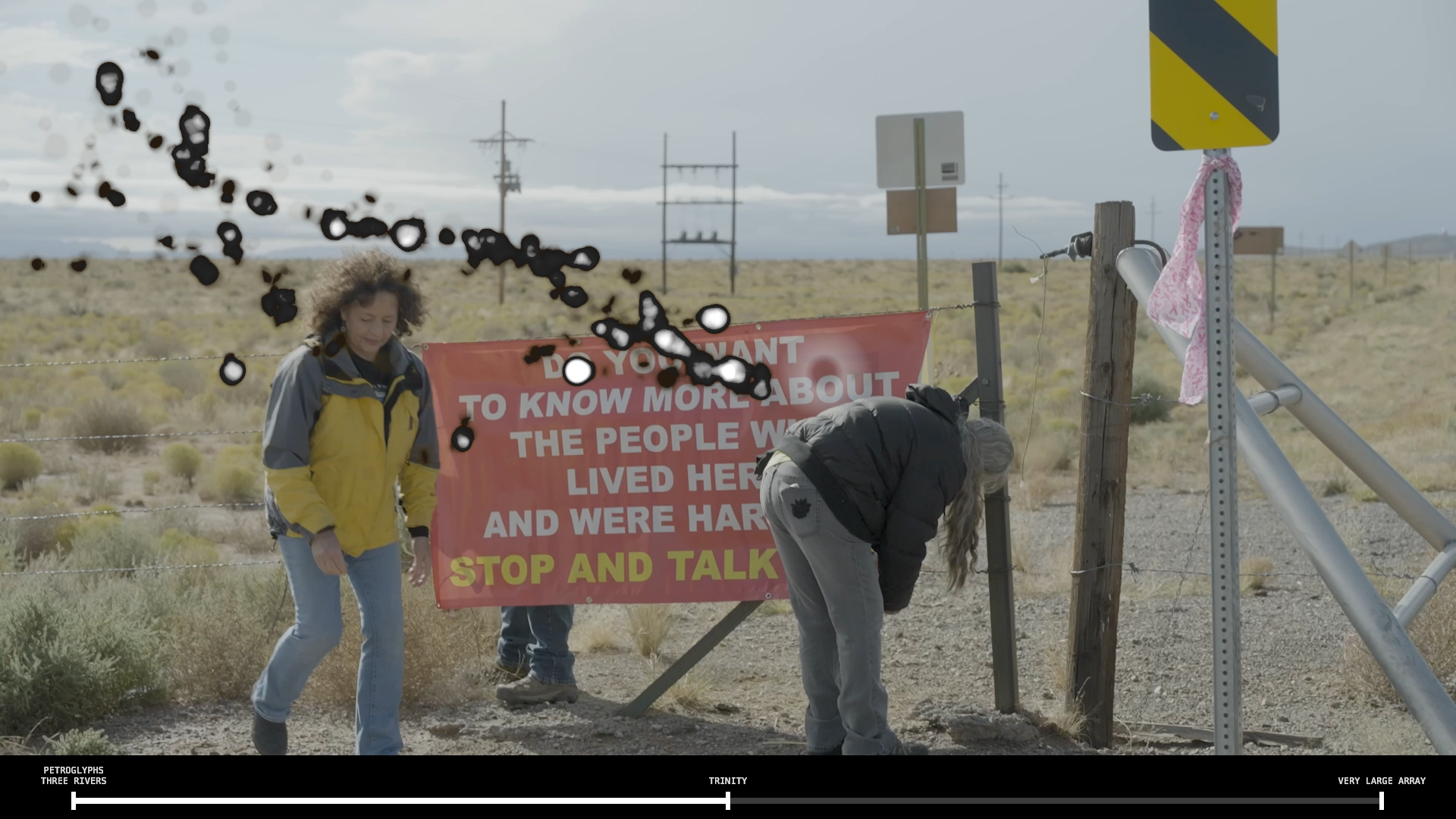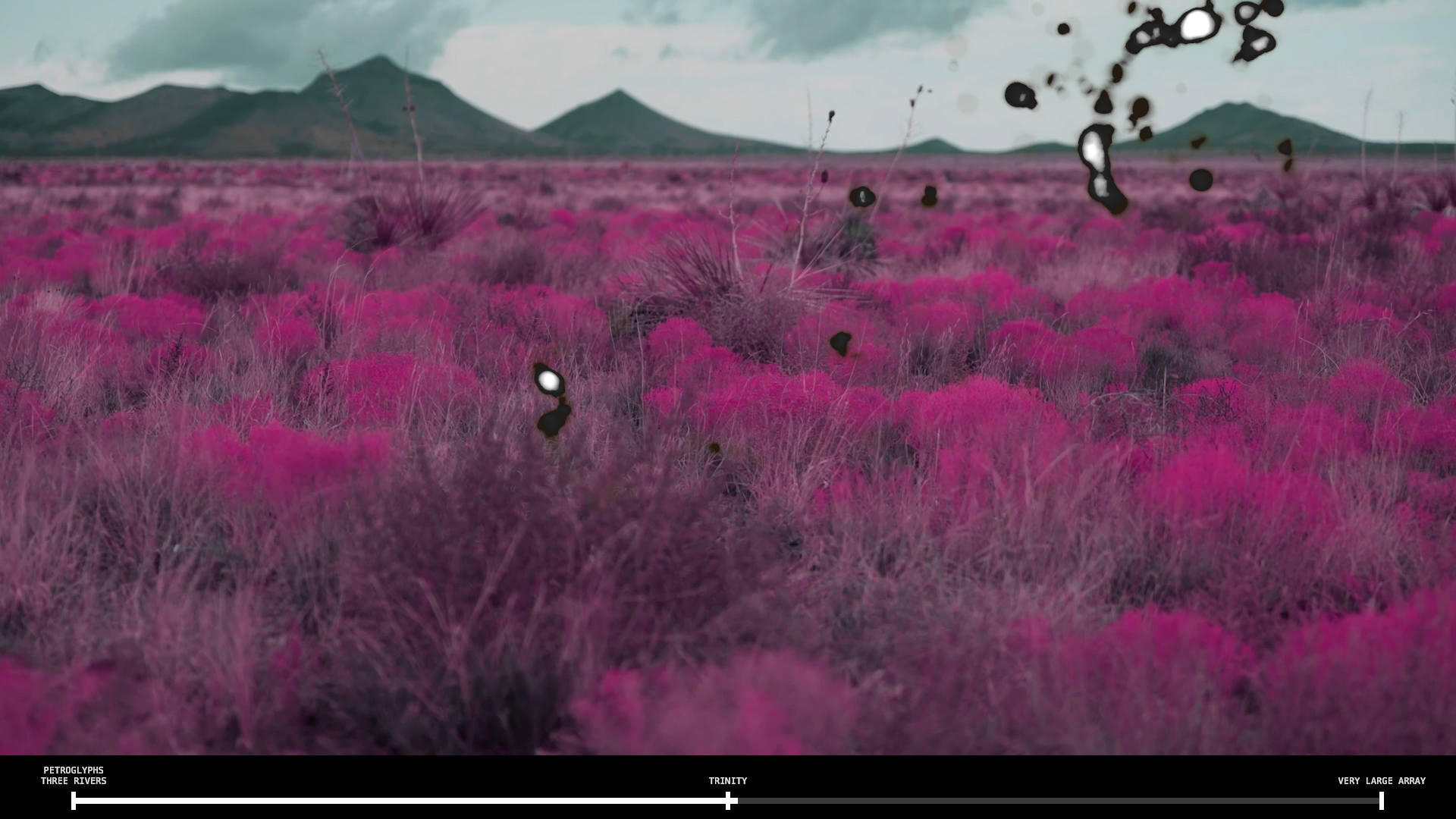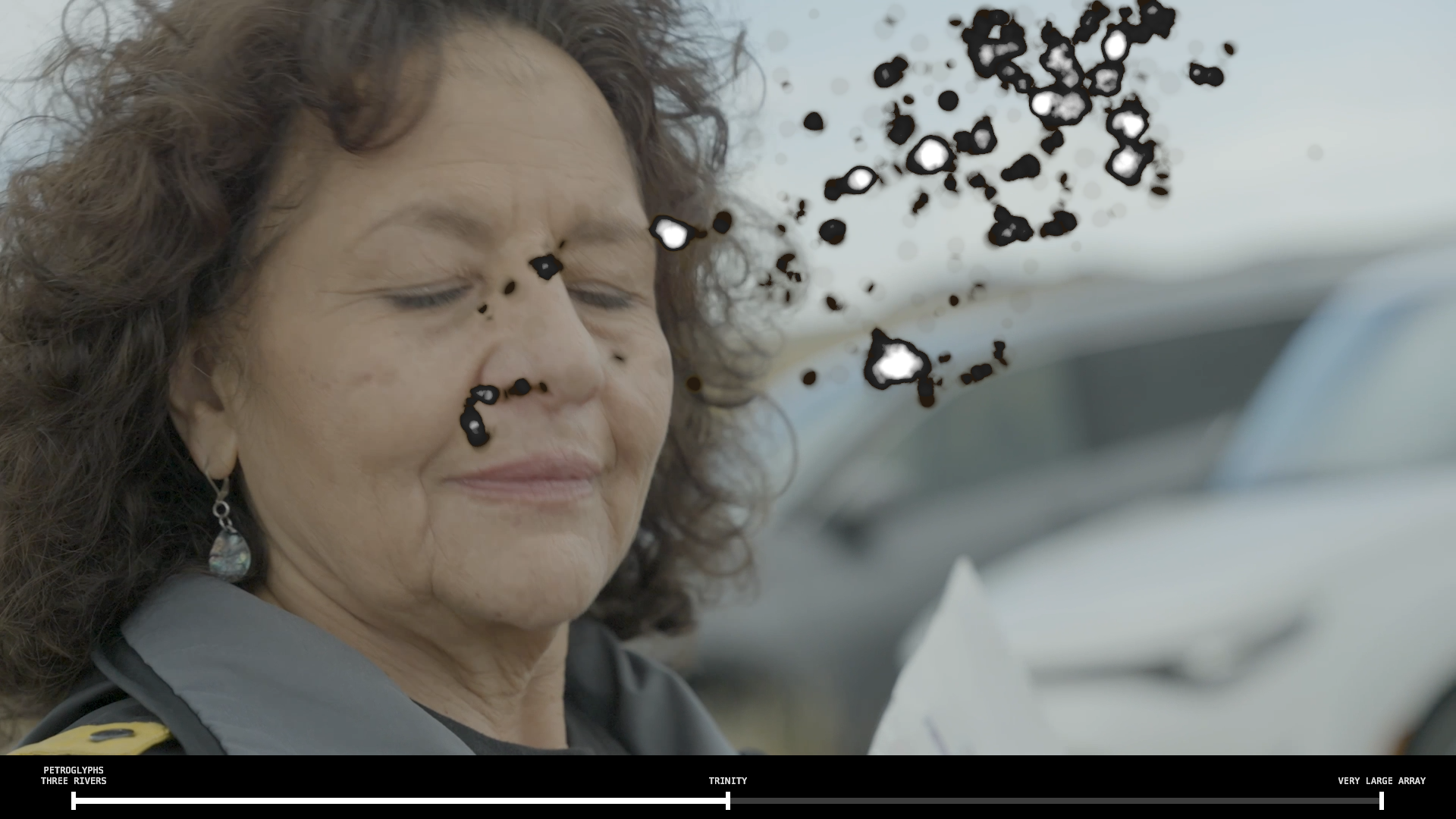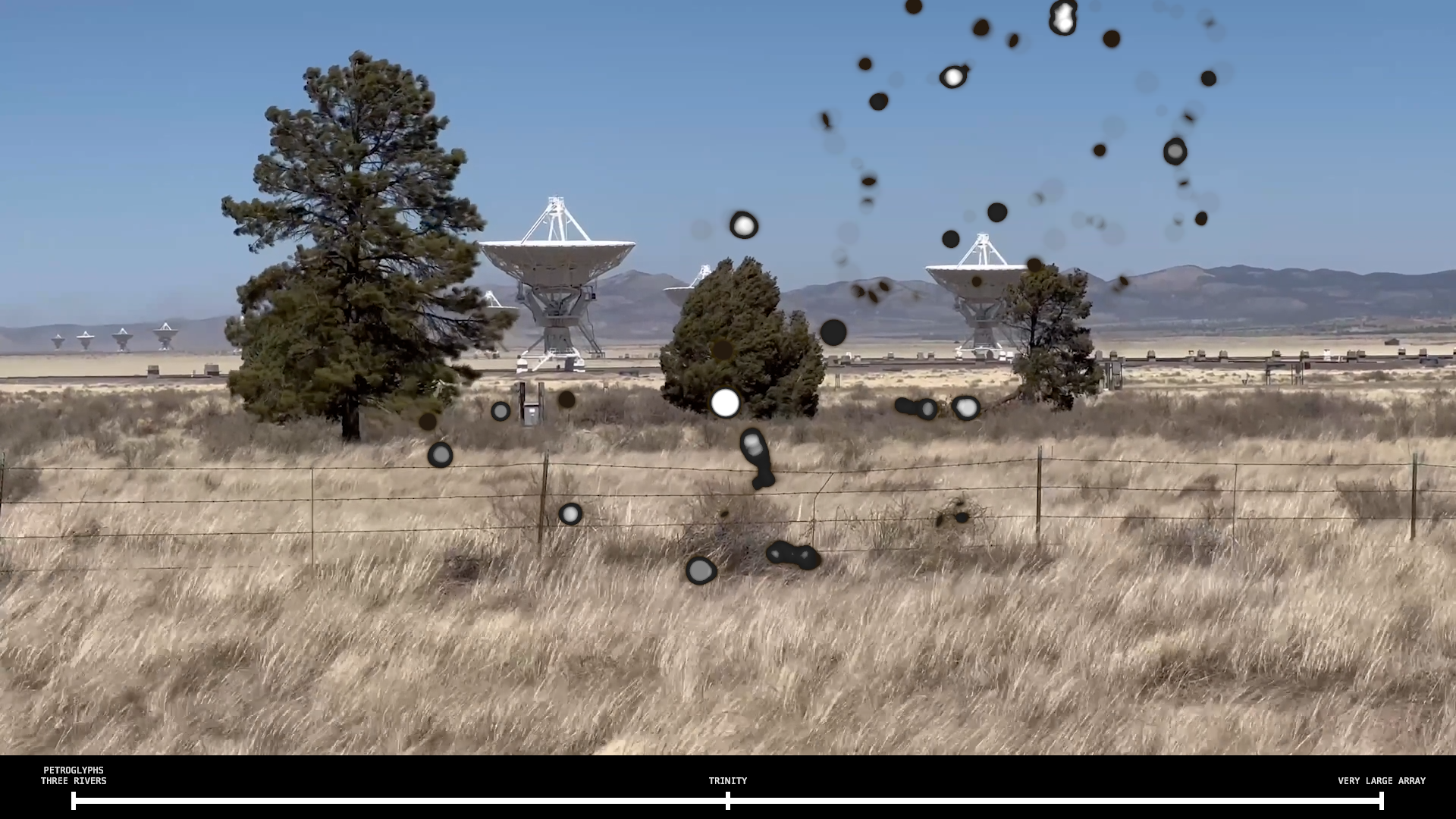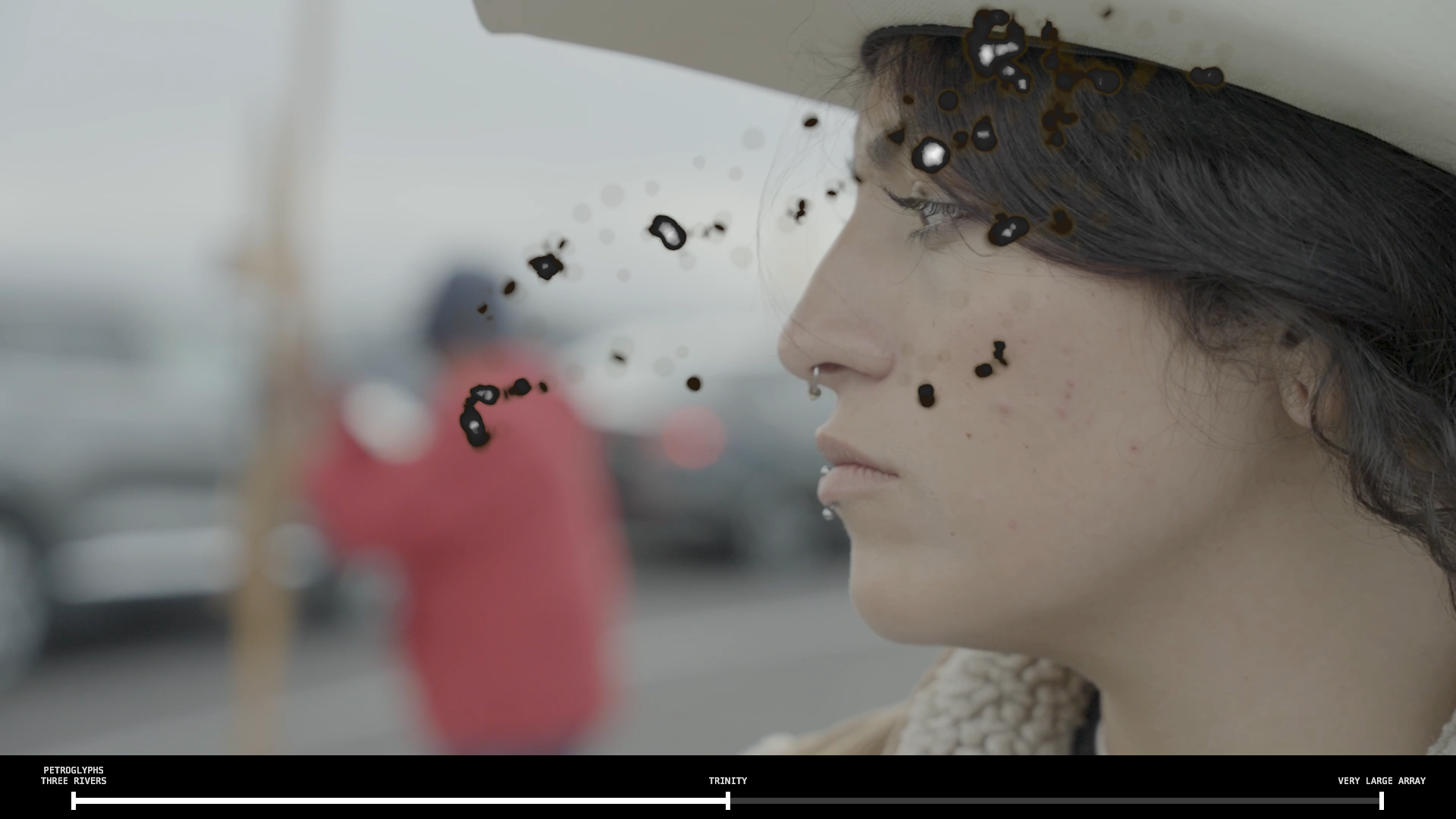Where the Sun Never Sets
New Media
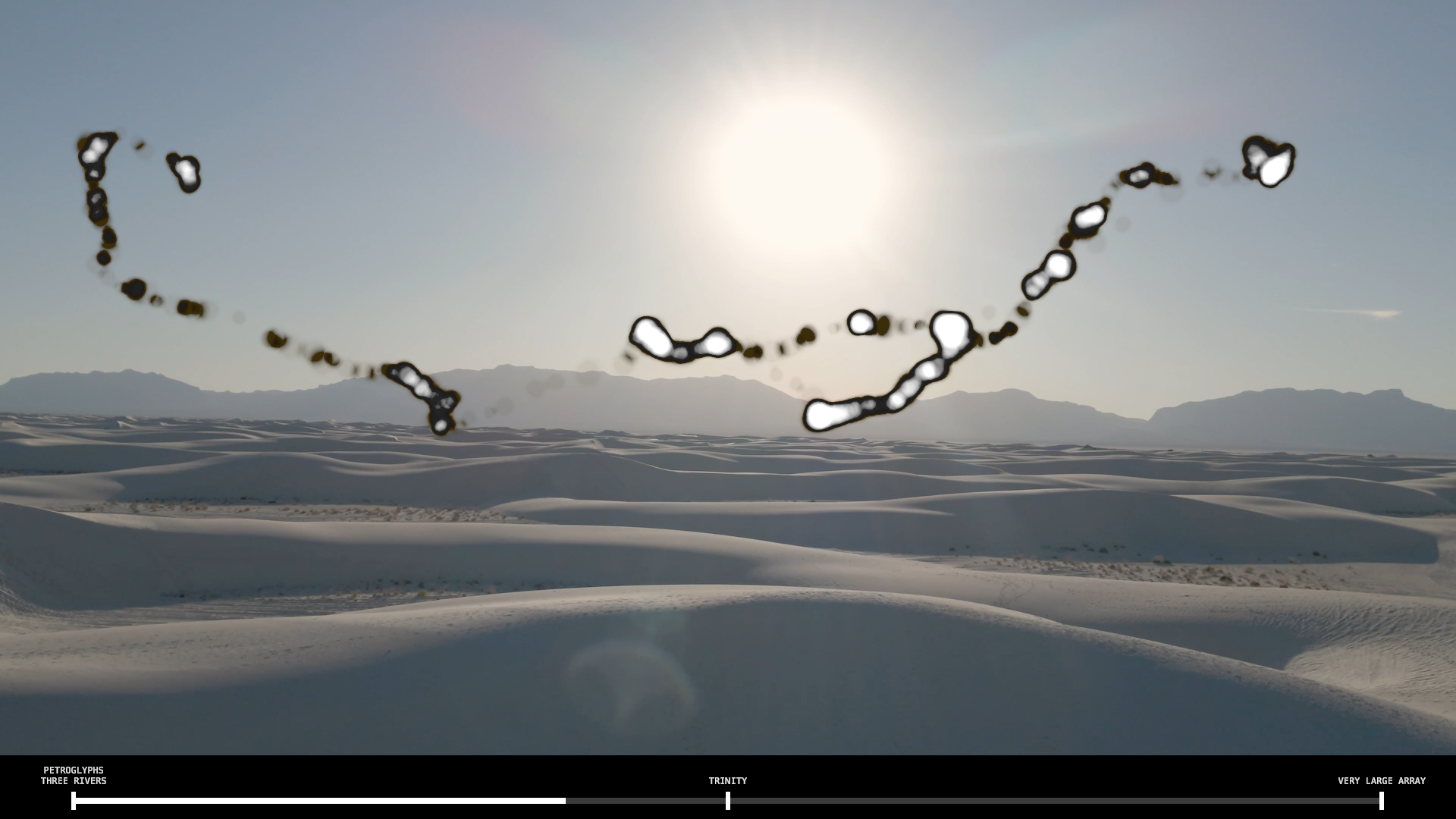
(c) Elise Morin
Discover Villa Albertine resident Élise Morin’s immersive video installation activated by eye-tracking and sonic cartographies.
Where the Sun Never Sets is an immersive experience in which the eye becomes a tool for sound exploration. Thanks to an eye-tracking system, each viewer’s eye movements trigger fragments of testimony and spatialized soundscapes, revealing the invisible strata of an irradiated territory.
The interactive film links three emblematic sites in New Mexico: Three Rivers Petroglyph Site, Trinity Site, and Very Large Array, weaving a narrative between ancestral sun worship and the shock of the first nuclear explosion. Three sites, three markers of a relationship to radiation – solar, atomic, and cosmic – woven through the ages. Voices from the Downwinders community, scientists (Timothy Mousseau), an astronaut (Katherine Megan McArthur), and native researchers compose a sensitive, political, and poetic cartography of the Tularosa Desert.
The paths of gaze are archived in the form of heatmaps on the suns.elise-morin.com website, offering each participant a personalized narrative, extending the experience beyond the installation. Here, the New Mexico desert becomes a backdrop where narratives of power, progress, and destruction are constantly replayed.
The Directors
Élise Morin
Élise Morin is a French visual artist and filmmaker whose interdisciplinary practice bridges ecological thought, immersive technologies, and speculative storytelling. Her work—spanning installations, performances, and interactive films—explores invisible narratives embedded in landscapes, often in collaboration with scientists, activists, and local communities.
Educated at the École Nationale Supérieure des Arts Décoratifs (Paris), Central Saint Martins (London), and Tokyo University of the Arts, she has exhibited internationally, including at Le Centquatre (Paris), the Jeu de Paume, the Grand Palais, and museums in Bucharest, Moscow, Beijing, and Tokyo.
Among her major works are Waste Landscape, a monumental installation made from 65,000 recycled CDs, and Spring Odyssey, a VR experience developed with NASA-affiliated biologists on post-nuclear ecologies. In 2023, she was an artist-in-residence at Villa Albertine in Texas and New Mexico, where she initiated Where the Sun Never Sets, an immersive video installation activated by eye-tracking and sonic cartographies.
Ferdinand Dervieux
Ferdinand Dervieux is a graphic and interactive experience designer. He creates original author-driven projects, responds to commissions, and loves to share his knowledge through workshops and training sessions.
Ferdinand Dervieux is the co-founder of:
• SharpSense, a company that develops and produces virtual reality games and immersive experiences.
• Parallèles Éditions, an experimental publishing house blending print and digital media.
• Panoptic Lab, a laboratory for virtual reality experimentation.
General Information
Director: Elise Morin
Year of Creation: 2025
In collaboration with the creative technologist Ferdinand Dervieux
Minimum Age : 12
In English, no subtitles
Technical Information
Format: Interactive video installation with gaze tracking, spatial sound, and online extension
Content: 8-minutes immersive film activated by eye-tracking, real-time gaze mapping (heatmaps) archived online, spatialized sound triggered by gaze (testimonies, environmental sounds, field recordings)
Optional module: 9 looped video portraits (Cactus Women, 10 min each)
Online extension of the experience, featuring all gaze maps and full interviews
Duration: 8 minutes
Number of participants per session: One person interacts at a time, while up to 20 audience members can share the experience from around the installation.
Equipment: High-definition video projector (minimum 4000 lumens), PC with a high-performance graphics card (NVIDIA GeForce RTX series or equivalent), Beam Eye Tracker or compatible iPad/iPhone with face ID for gaze tracking, stereo audio system or headphones for spatialized sound playback, HDMI cables, power cables, and appropriate mounting support.
Stable Wi-Fi connection (for heatmap data upload and website access)
Optional: Tablets and headphones for the Cactus Women video portraits module
Surface area: Exhibition space: minimum 3×3 meters (10×10 ft), ideally 6×6 meters (20×20 ft)
Device: A projection screen or wall, a high-performance PC running the interactive video, a gaze-tracking device (Beam or iOS), a spatial audio system (stereo speakers or headphones), live gaze heatmap generation and archiving on suns.elise-morin.com
Internet connection
Contact
elisemorin@mac.com
Trailer

